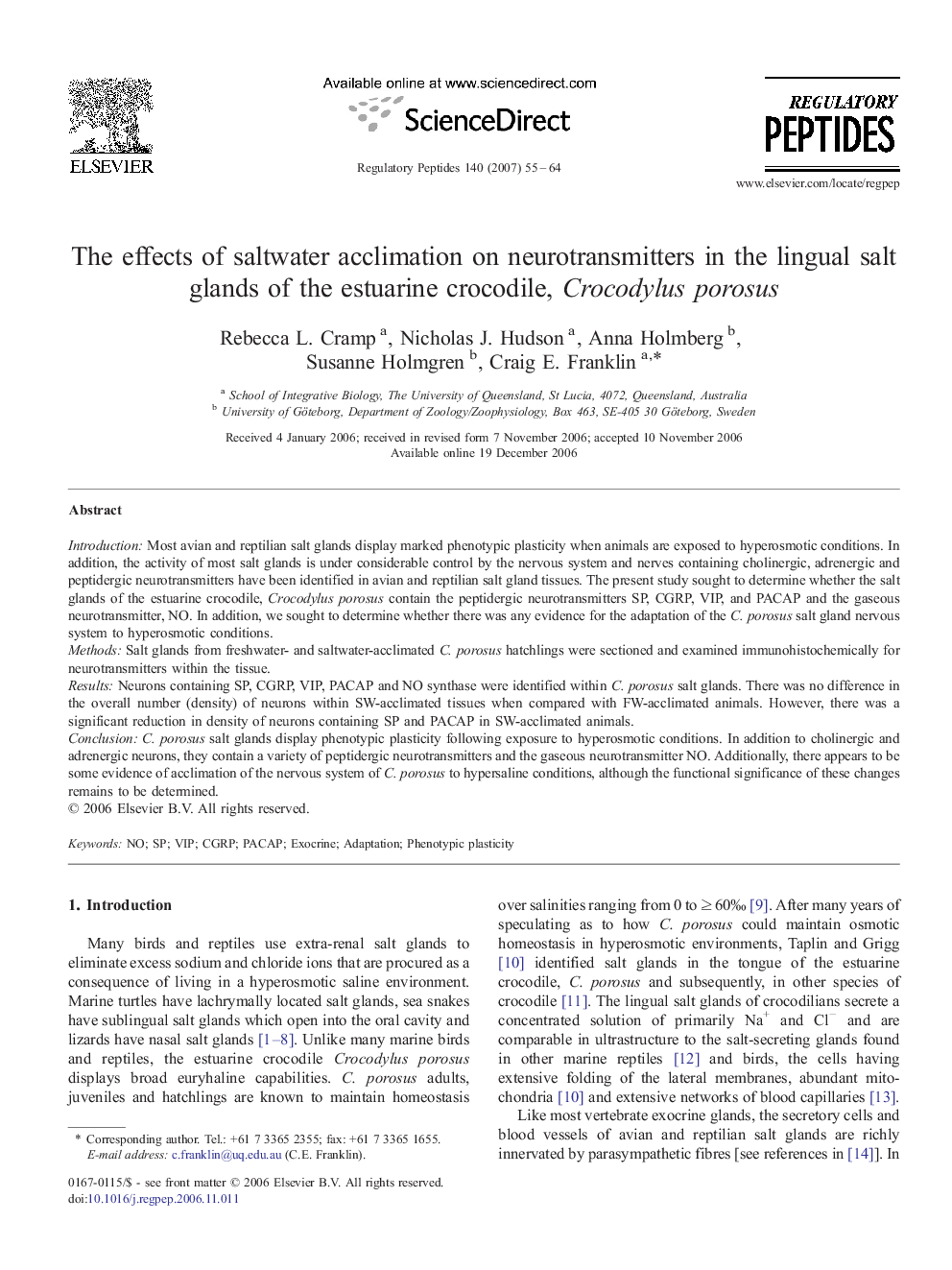| Article ID | Journal | Published Year | Pages | File Type |
|---|---|---|---|---|
| 2023371 | Regulatory Peptides | 2007 | 10 Pages |
IntroductionMost avian and reptilian salt glands display marked phenotypic plasticity when animals are exposed to hyperosmotic conditions. In addition, the activity of most salt glands is under considerable control by the nervous system and nerves containing cholinergic, adrenergic and peptidergic neurotransmitters have been identified in avian and reptilian salt gland tissues. The present study sought to determine whether the salt glands of the estuarine crocodile, Crocodylus porosus contain the peptidergic neurotransmitters SP, CGRP, VIP, and PACAP and the gaseous neurotransmitter, NO. In addition, we sought to determine whether there was any evidence for the adaptation of the C. porosus salt gland nervous system to hyperosmotic conditions.MethodsSalt glands from freshwater- and saltwater-acclimated C. porosus hatchlings were sectioned and examined immunohistochemically for neurotransmitters within the tissue.ResultsNeurons containing SP, CGRP, VIP, PACAP and NO synthase were identified within C. porosus salt glands. There was no difference in the overall number (density) of neurons within SW-acclimated tissues when compared with FW-acclimated animals. However, there was a significant reduction in density of neurons containing SP and PACAP in SW-acclimated animals.ConclusionC. porosus salt glands display phenotypic plasticity following exposure to hyperosmotic conditions. In addition to cholinergic and adrenergic neurons, they contain a variety of peptidergic neurotransmitters and the gaseous neurotransmitter NO. Additionally, there appears to be some evidence of acclimation of the nervous system of C. porosus to hypersaline conditions, although the functional significance of these changes remains to be determined.
